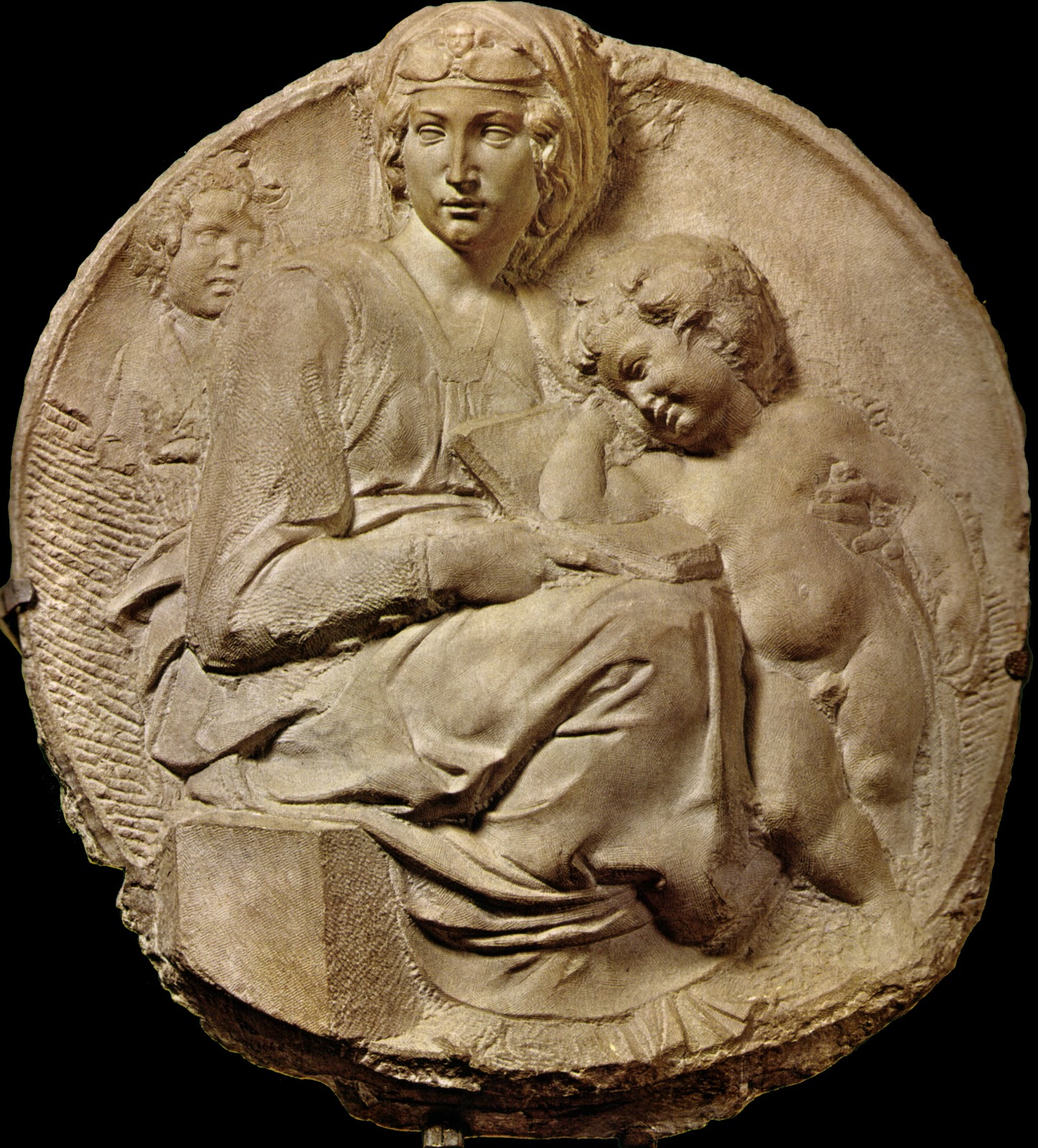
Tondo Art Tutt'Art Pittura • Scultura • Poesia • Musica
The Pitti Tondo (Tondo Pitti) is an unfinished marble relief of the Virgin and Child by Michelangelo in round or tondo form. It was executed between 1503 and 1504 while he was residing in Florence and is now in the Museo nazionale del Bargello in Florence. History

Michelangelo. Tondo Pitti Virgin and Child with the Young St. John
Doni Tondo, by Michelangelo. The Doni Tondo, sometimes called The Holy Family, is the only finished panel painting by the mature Michelangelo to survive.Now in the Uffizi in Florence, Italy, and still in its original frame, the painting was probably commissioned by Agnolo Doni to commemorate his marriage to Maddalena Strozzi, the daughter of a powerful Tuscan family.

"Tondo Pitti" Michelangelo Buonarroti, 15031504 circa (Rinascimento
The Tondo Pitti is a marble bas-relief realized by Michelangelo between 1503 and 1504 and hosted at the National Museum of the Bargello in Florence.It is one of the most important works done by the artist, one of the most famous, dating from the same years in which Michelangelo was carving the David. While working on his most famous statue, the artist was in fact devoted, in the meantime, to a.

Michelangelo Tondo Pitti, 15041505 Marble diameter cm 80 Museo
It also has other sculptures by Michelangelo and a large collection of paintings by Florentine artists, mostly from the period 1300-1600. Cosimo I de' Medici and his wife Eleanor of Toledo chose Pitti Palace in 1550 as the new Grand Ducal residence; it soon became the symbol of the Medici's power over Tuscany. It later became the home of.

TONDO PITTI
Michelangelo had not long studied the potential of the circular shape, which was greatly appreciated in the early Renaissance for religious decorations for the home, in the marble of the "Pitti Tondo" (Bargello National Museum) and the "Taddei Tondo" (Royal Academy of London): in both cases, the Virgin, Child and Infant St John.

Tondo Pitti // ca. 15031504 // Michelangelo Buonarroti // Museo
The 'Taddei Tondo' is the only marble sculpture by Michelangelo in Great Britain. Commissioned by Taddeo Taddei, it remained in the Casa Taddei, Florence, until the early nineteenth-century when it was in the possession of Jean-Bapiste Wicar in Rome. Sir George Beaumont purchased the sculpture in 1822 and bequeathed it to the Royal Academy.At the left side of the tondo stands the infant figure.

Doni Tondo by Michaelangelo Buonnarrati. At Ufizzi Gallery
Michelangelo carved this marble Tondo between 1503 and 1505 for Bartolomeo Pitti, as a private commission. A plaster copy of a true cast is on show at the Museo Omero, while the original is at the Bargello Museum. The sculptor has fitted the scene into a circular shape with a diameter of 85 cm.

Michelangelo Buonarroti Tondo Doni, 15051506 Tutt'Art Pittura
The Tondo Pitti was commissioned by Bartolommeo Pitti and was created at about the same time as the Tondo Taddei and The Doni Madonna. These pieces all show Michelangelo's preoccupation with the subject of the Virgin and Child, but these pieces demonstrate a much freer treatment of the centuries old subject. Much like the Tondo Taddei, the.
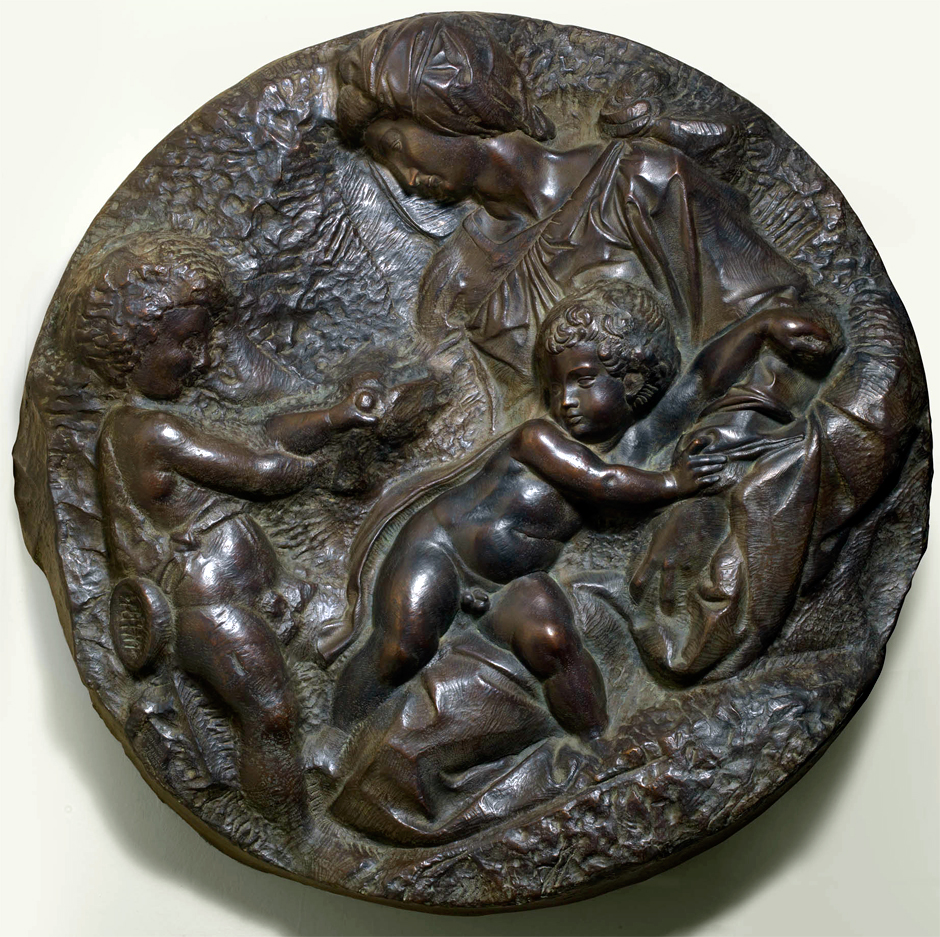
Tondo Taddei by Michelangelo Buonarroti 1503 Michelangelo Sculptures
Michelangelo produced this marble sculpture in 1503/1504. It was one of several tondos from his career, alongside the likes of Taddei Tondo. The Madonna sits next to a relaxed looking child within this composition. Behind them is an additional child (Infant Saint John), though only shown partially. The Madonna dominates this sculpture because.
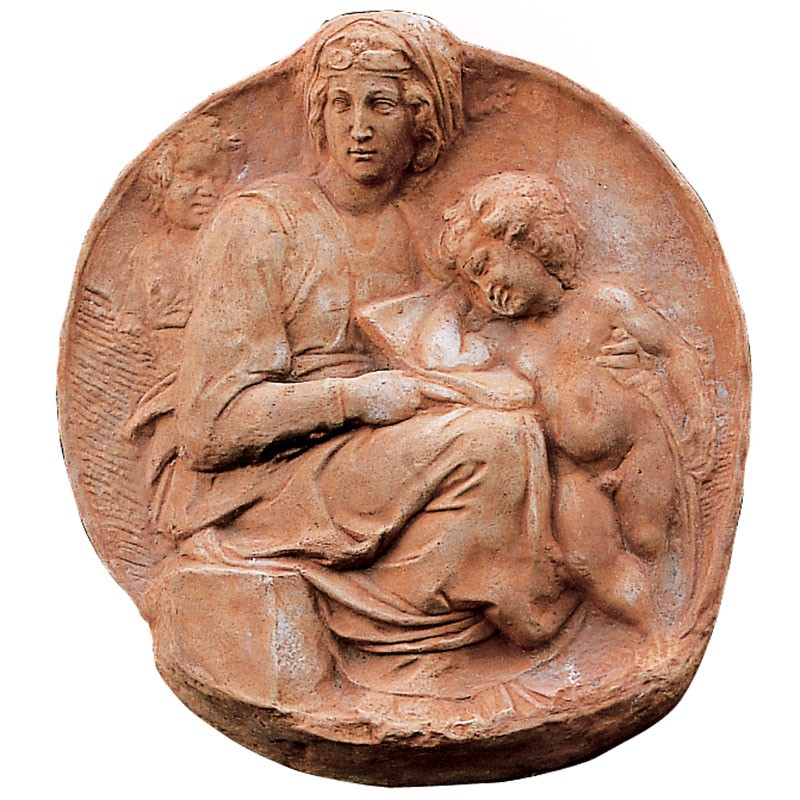
Tondo Pitti Michelangelo Poggi Ugo Terracotta
3. Michelangelo, Pitti Tondo, 1504-05. This graceful relief carving was a private commission from Bartolomeo Pitti. The tondo, or round format, is typical of domestic art. Pitti Tondo depicts a common Renaissance theme — Mary with baby Jesus and St. John the Baptist. Its similar to Michelangelo's painting, Doni Tondo, in the Uffizi.
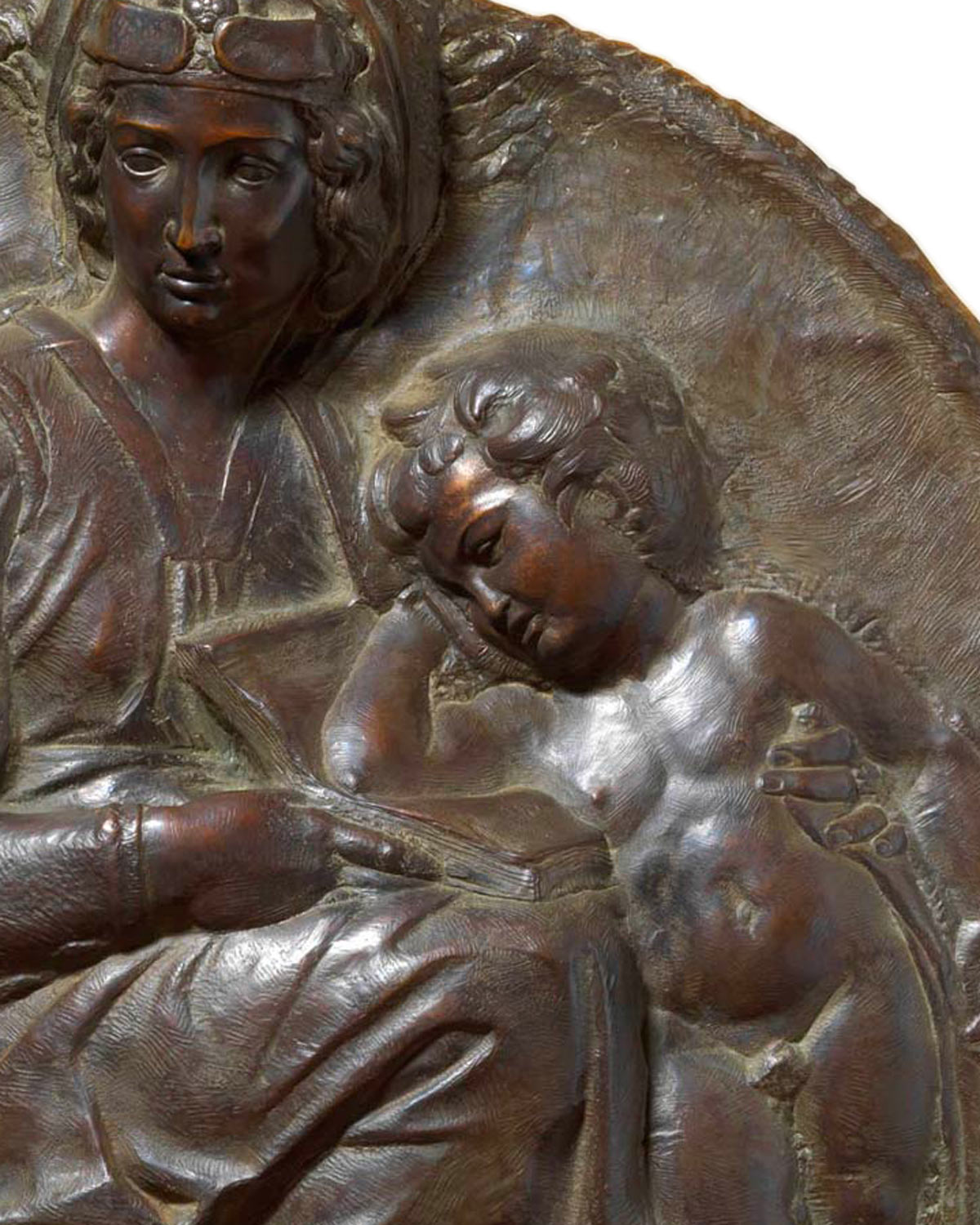
Scultura in bronzo bassorilievo "Tondo Pitti" di Michelangelo Bazzanti
It was executed for Bartolommeo Pitti, nephew of the Florentine chancellor, Luca Pitti (1395-1472). This plaster is cast by Oronzio Lelli, ca. 1876. This is a plaster cast after the marble original Pitti Tondo by Michelangelo, sculpted between 1501 and 1506. The cast was done by Oronzio Lelli, around 1876.
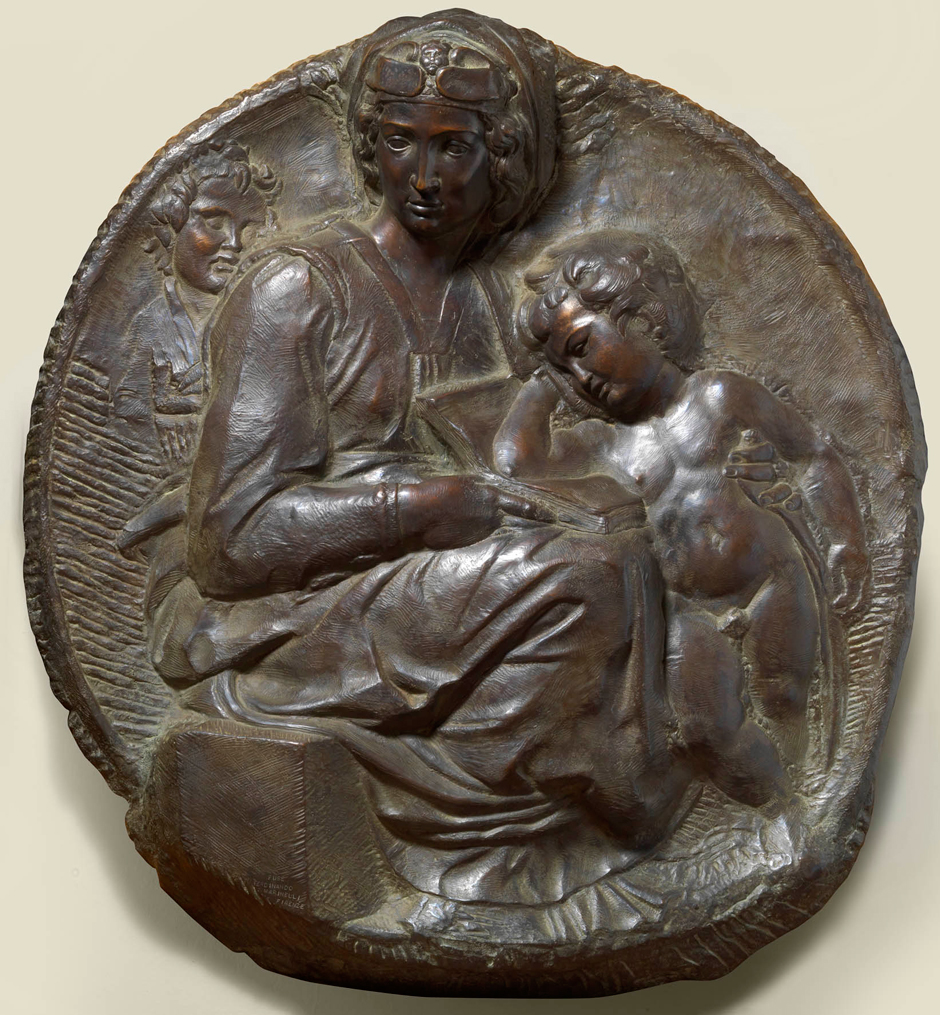
Tondo Pitti Michelangelo Buonarroti ca. 15045 Michelangelo Sculpture
The Tondo Pitti was commissioned by Bartolommeo Pitti and was created at about the same time as the Tondo Taddei and The Doni Madonna. These pieces all show Michelangelo's preoccupation with the subject of the Virgin and Child, but these pieces demonstrate a much freer treatment of the centuries old subject.
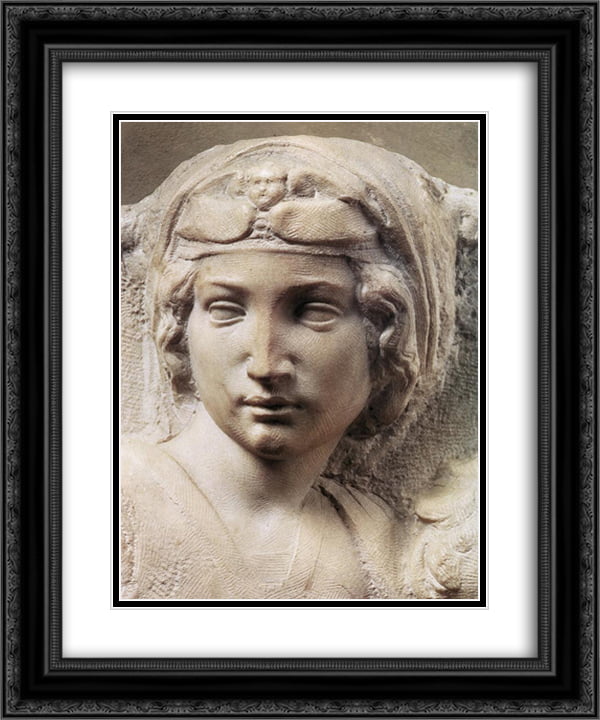
Michelangelo 2x Matted 20x24 Black Ornate Framed Art Print 'Madonna
Storia. Il tondo risale agli anni in cui Michelangelo stava scolpendo il David, trovando il tempo di dedicarsi anche a qualche remunerativa commissione privata.Quest'opera in particolare fu eseguita per Bartolomeo Pitti, il cui figlio Miniato, monaco a Monteoliveto, la donò a Luigi Guicciardini (1487-1551). In casa di suo nipote Piero, Benedetto Varchi vide l'opera nel 1564.
Tondo Pitti (particolare), 1504 di Michelangelo Buonarroti (14751564
Michelangelo worked on the project between 1547 and 1555, while he was in his 70s, and it was a difficult project from the outset.. as well as the so-called "Pitti Tondo" and a bust of.

Pitti Tondo Lelli, Oronzio Michelangelo V&A Explore The Collections
The Tondo Pitti was commissioned by Bartolommeo Pitti and was created at about the same time as the Tondo Taddei and The Doni Madonna. These pieces all show Michelangelo's interest with the subject of the Virgin and Child, but these pieces demonstrate a much freedom with the technic, and also creating a graceful composition that describes the.

Tondo Pitti By Buonarroti Michelangelo 1503 1505 16th Century Bas
Early Life. Born on March 6, 1475, in a town near Arezzo, in Tuscany, Michelangelo lived a comfortable life during his childhood. His family were bankers in Florence, but his father decided to enter a government post when the bank industry failed. When he was born, his father served as the judicial administrator at Caprese, as well as Chiusi's.